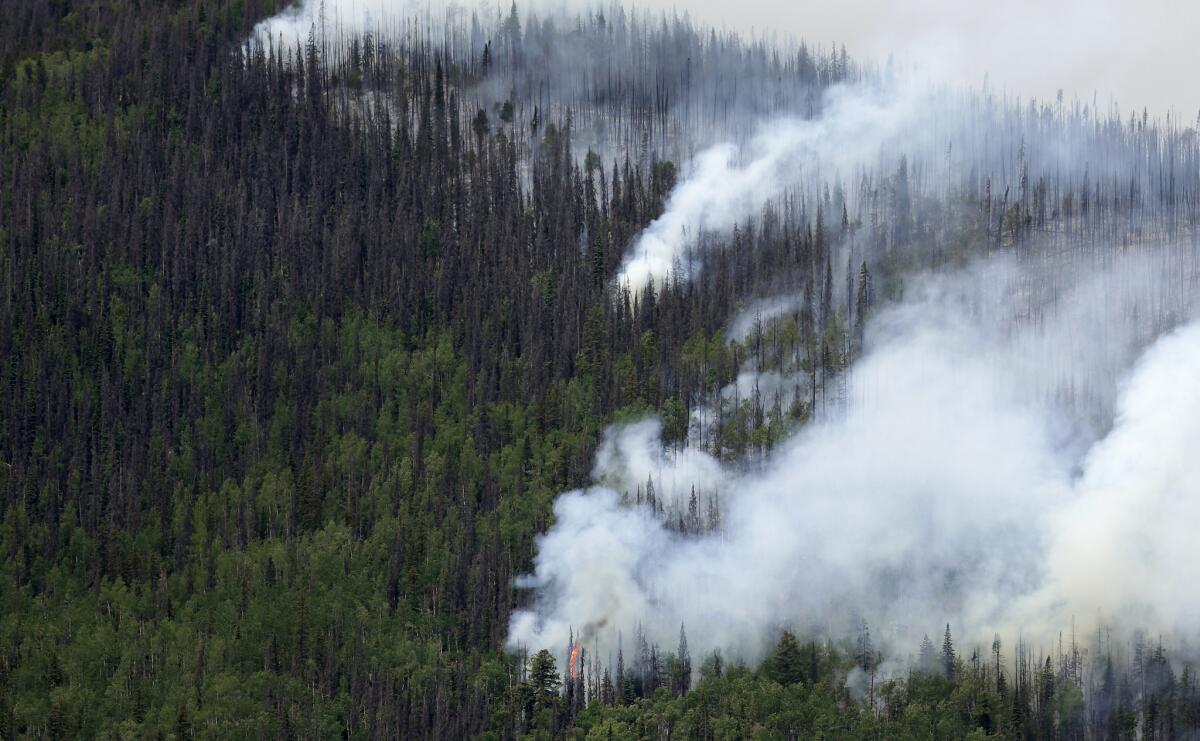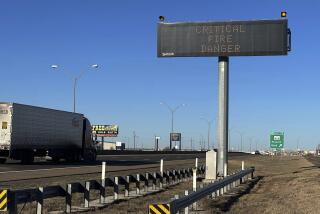Colorado firefighters in for ‘long term’ battle

Emergency crews in southwest Colorado are hunkering down for a protracted battle against the largest fire to strike a remote mountain area known for its tourism and mining history.
Winds eased slightly on Tuesday to bring the West Fork Complex fire, which has grown to more than 75,000 acres, out of “red flag conditions.” But the forecast only slightly increased optimism among firefighting teams.
“We certainly can’t say we are a lot better, just under red flag thresholds,” West Fork Complex incident commander Pete Blume told reporters at a morning news conference, the Associated Press reported. “It’s not exactly like it’s going to be a great fire day.”
The fire is a convergence of three different blazes burning in a remote area of the San Juan Mountains, known for its tourism and mining history. Almost 1,000 firefighters are tackling the blaze, which had zero containment as of Tuesday.
The Papoose fire, burning about 10 miles southwest of the historic town of Creede, has seen the most activity in recent days. A subdivision of 100 homes west of Creede has been a particular focus of protective efforts, said fire information officer Laura McConnell.
In the nearby mountain town of South Fork, firefighters brought in bulldozers to build up a protective line as the flames moved within two miles of the town. More than 1,000 residents and visitors were evacuated from the area Friday morning, and it is unclear when the mandatory order will be lifted.
Unfavorable weather conditions have combined with an ample supply of fuel to create a raging blaze that will take time to knock down, officials said.
“This will be a long term event,” McConnell said.
No structures have been reported destroyed. The fire is burning in an area with homes and resorts, as well as ranches that have been owned by local families for hundreds of years.
Firefighters are using natural barriers, such as outcroppings, in addition to bucket work, to walk the flames around structures.
Before the West Fork Complex Fire, the Rio Grande National Forest was known as “the one that never burned” said Mark De Gregorio, a spokesman with the Rocky Mountain Incident Management Team.
Rainfall from the San Juan Mountains typically extinguished flames in the past, and the last large-scale fire was fewer than 10,000 acres, De Gregorio said. A prolonged drought in the region, with warmer winters and less snow, has led to changed conditions, as well as an outbreak of spruce beetle that killed off large numbers of trees.
“When you combine all that -- the hot dry weather, the fuel and wind and low humidity, you get a fire that becomes unprecedented” in recorded history, De Gregorio said.
Farther to the east, the East Peak fire reached 50% containment as cooler temperatures allowed crews to make headway. The blaze has burned more than 13,000 acres since it ignited June 19.
ALSO:
Rusty the red panda escapes from National Zoo for a field trip
Rules for Neighborhood Watch discussed in George Zimmerman trial
Lawyers to argue over phone call in George Zimmerman murder trial
Twitter: @devkelly17
More to Read
Start your day right
Sign up for Essential California for news, features and recommendations from the L.A. Times and beyond in your inbox six days a week.
You may occasionally receive promotional content from the Los Angeles Times.





